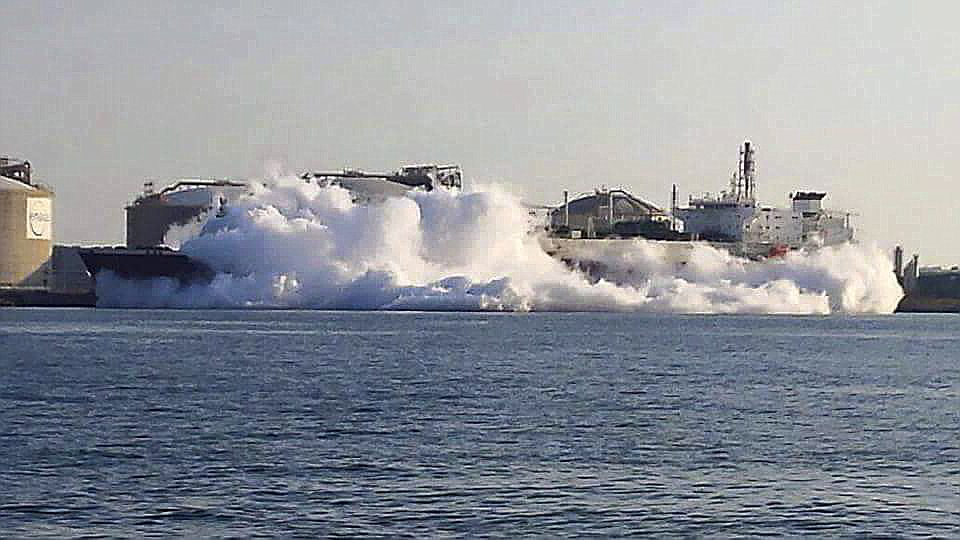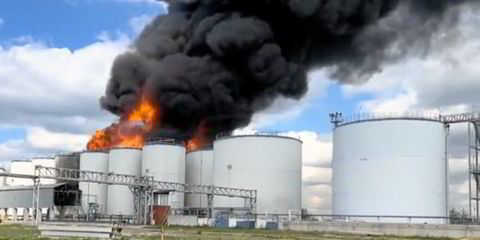Japanese shipowner Mitsui OSK Lines (MOL) has given details about its moves to improve vessel operations following an accidental release of LNG from a vessel at Barcelona’s terminal last year.
Speaking to TradeWinds, London-based MOL LNG-E managing director Andy Richardson said the incident — details of which were not widely reported outside Spain — saw some 11 cbm of LNG released from the 138,000-cbm Fuwairit (built 2004) at Enagas’ terminal on 19 June 2015. Pictures in the local media showed a vapour cloud spreading out around the vessel and over the water.
Nobody was hurt in the incident. Richardson says the Fuwairit’s No 1 tank overfilled and LNG was ejected via the forward vent mast raining down on the vessel’s port side as the ship was ramping up to discharge its cargo.
High-level alarms should have sounded to alert the crew that LNG was rising in the tank but these failed to go off as they had been switched to “sea mode”. In tandem, a filling valve on the ship’s tank No 1 was found to have malfunctioned and was shown as closed when it was open.
Contact of the super-cooled cargo with the vessel caused a number of brittle fractures to the ship’s deck and deckhead. The ship resumed discharge operations on 20 June, completing these the following day.
Temporary repairs were made and the vessel later moved to a Spanish repair yard where permanent repair work was undertaken. The ship returned to service on 6 July 2015. Richardson says five persons were “called to task” over the incident without giving further details.
He says inhibiting the high level tank alarms while the ship is in port is strictly against company policy. But he adds that MOL’s investigations later found this to be something of a common practice among LNG crews throughout the industry. MOL has now put in place an interlock so that it is impossible to start cargo pumps in port if any of these alarms are inhibited.
He explains that following its investigation MOL also identified a breakdown in teamwork in the cargo control room onboard the vessel as a likely contributory factor to the incident. As a result, the company developed from scratch a new cargo control room resource-management simulator training course, which has been approved by class, to enable crew to better respond in situations.
MOL has also installed CCTV and audio recorders, similar to those put in place on a ship’s bridge, in the cargo control rooms on its LNG carriers and conducts ad hoc audits of this data and cargo operations.
“There can be no commercial pressure real or perceived that subverts safe operations,” Richardson said. “Safe and flawless is the only way.”
The Furwairit has been fully trading since last July and Richardson says it has been approved to return to Barcelona.





